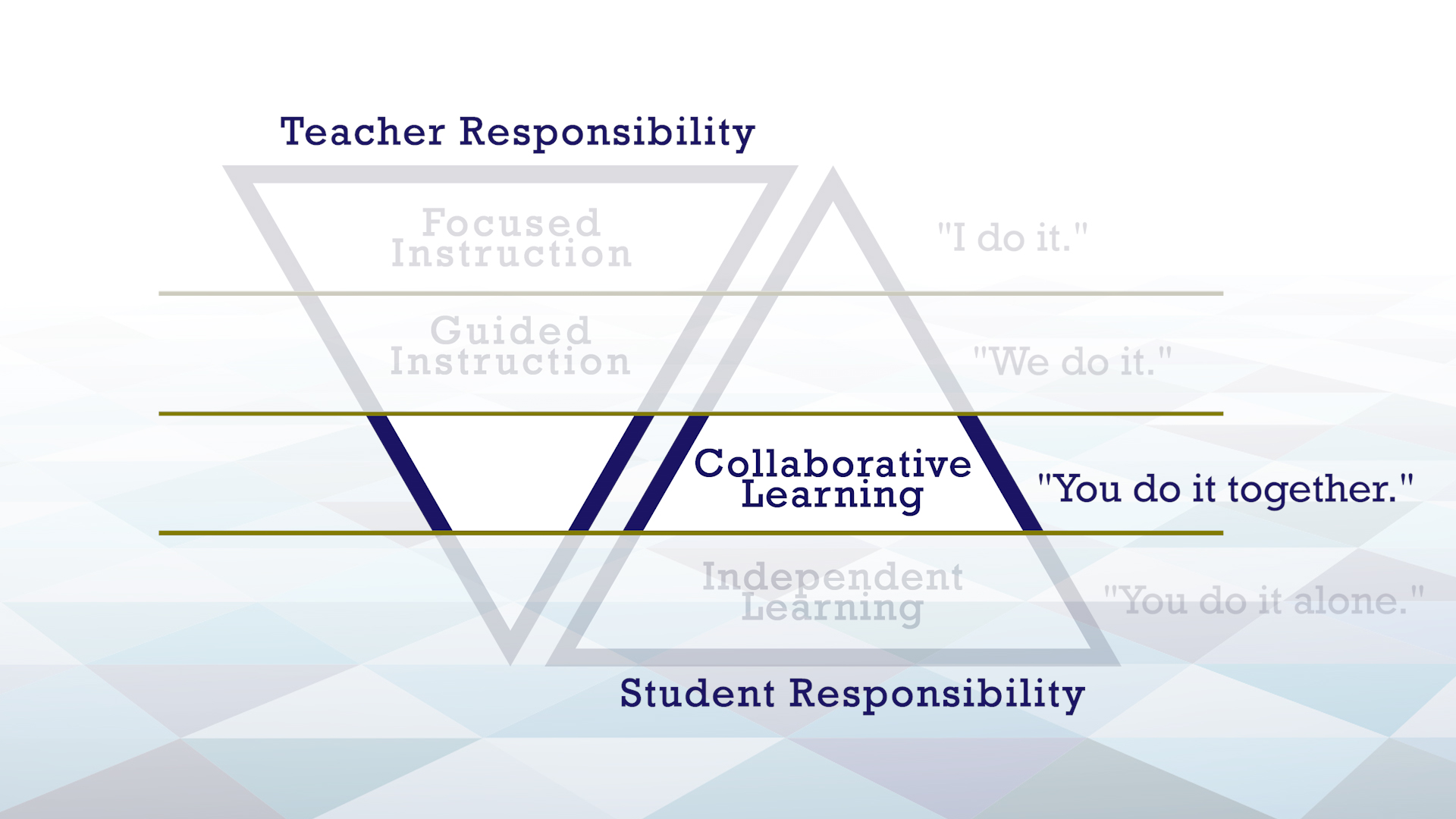Collaborative Learning - “You do it together”
Following the guided learning phase, GRR moves into a third step of collaborative learning. This is the “You do it together” phase, which typically lasts between 25 and 40 minutes. During this time, students practice the content in groups, organizing their materials, communicating and solving problems together. At this point the teacher pulls back and focuses on flexible group differentiation, or moves through the room prompting and questioning. Ms. Hager explains the collaborative learning phase in the following video.

During collaborative learning, a greater level of responsibility is shifted to students as they problem solve and work with their peers and take personal accountability in group assignments.
Watch the following video to learn more about the collaborative learning phase of GRR.
During the collaborative learning phase, students are expected to apply and share the skills that they have been taught – and to lean on each other, as needed. Collaborative learning tasks may be completed in pairs, groups or at stations. The key is that students are presented with opportunities to problem solve, discuss, negotiate and think with their peers.
Collaborative learning aligns well with the Maryland College and Career Ready Standards ; STEM Standards of Practice ; the Next Generation Science Standards ; and the College, Career, and Civic (C3) Life for Social Studies State Standards because it emphasizes the following student behaviors:
- Editing and revising with their peers
- Speaking and listening on grade-level topics
- Justifying conclusions and making reasoning clear to others
Now take a moment to read the following best practices for implementing collaborative learning.
Best practices for implementing collaborative learning
- Collaborative groups of students should be given every opportunity to solve problems, discuss and think with their peers without teacher influence. (The teacher should only intervene if requested, or if she sees a need.)
- All collaborative learning tasks should be directly related to the content purpose, language purpose and social purpose for the lesson.
- Student groups should work on tasks collaboratively; collaborative learning is not an opportunity for students to rely on one person in the group to respond to the task.


